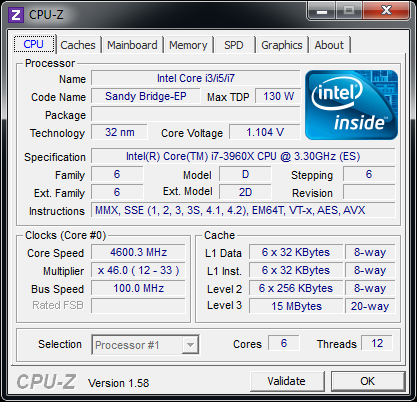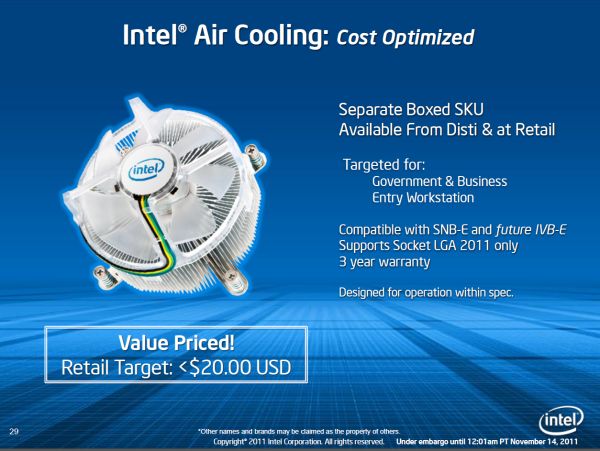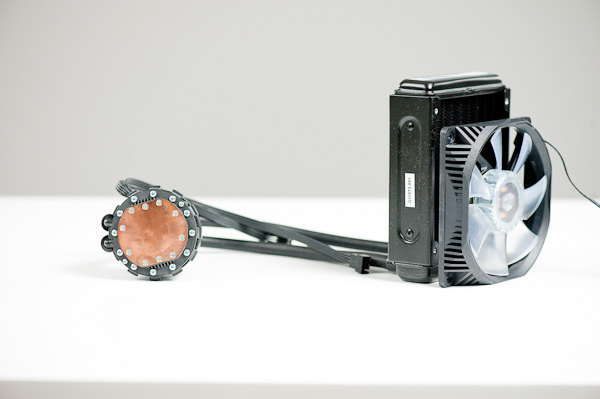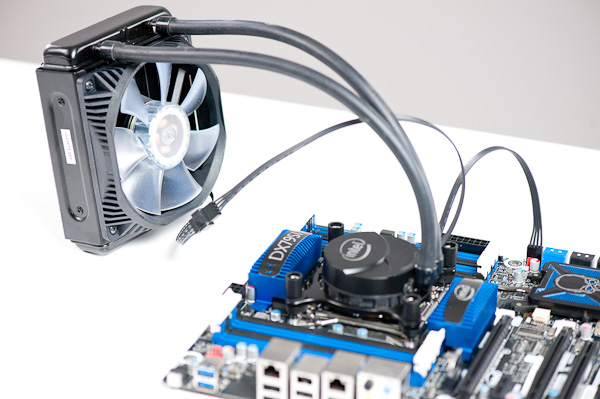Intel Core i7 3960X (Sandy Bridge E) Review: Keeping the High End Alive
by Anand Lal Shimpi on November 14, 2011 3:01 AM EST- Posted in
- CPUs
- Intel
- Core i7
- Sandy Bridge
- Sandy Bridge E
Overclocking
Sandy Bridge brought the motherboard's clock generator onto the 6-series chipset die. In doing so, Intel also locked its operation to 100MHz. While there was a bit of wiggle room, when combined with a locked processor, Intel effectively killed overclocking with most lower end Sandy Bridge chips.
For its more expensive CPUs, Intel offered either partially or fully unlocked (K-series) CPUs. The bus clock was still fixed at 100MHz, but you could overclock your processor by increasing its clock multiplier just like you could in the early days of overclocking.
With Sandy Bridge E, overclocking changes a bit. The clock generator is still mostly impervious to significant bus clock changes, however you're now able to send a multiple of its frequency to the CPU if you so desire. The options available are 100MHz, 125MHz, 166MHz and 250MHz.
Once again, wiggle room at any of these frequencies is limited so don't think we've moved back to the days of bus overclocking. You do get a little more flexibility, particularly with partially unlocked CPUs, but otherwise SNB-E overclocking is hardly any different from its predecessor.
Note that even if you select any of these options, the rest of the system still operates within spec. The multiplied bus clock is only fed to the CPU.

With a bit of effort I had no problems hitting 4.6GHz on my Core i7 3960X review sample. I had to increase core voltage from 1.104V to 1.44V, but the system was stable. While I could get into Windows at 4.8GHz and run a few benchmarks, the system wasn't completely stable.
No Cooler Included
None of the retail or OEM SNB-E parts include an Intel cooler in the bundle, a significant departure from previous CPUs. Presumably the cost of bundling a beefy cooler with these parts would've driven prices higher than Intel would've liked (remember you are getting a much larger die for roughly the same price as the outgoing Core i7 990X). Intel can also rationalize its decision against including any sort of cooler in the retail box by looking at the fact that many enthusiasts at this level opt for aftermarket cooling regardless.
Intel hasn't completely left SNB-E cooling up to 3rd party vendors however. There are two official Intel coolers available for use with SNB-E. The first is a < $20 heatsink that looks a lot like Intel's current coolers but with a couple of modifications (clear fan/shroud, retention screws instead of pegs). Intel states that this cooler is designed for operation within spec, meaning it could possibly limit overclocking attempts.

If you want an Intel branded overclocking solution, there's the RTS2011LC:

This is a closed loop liquid cooling solution similar to what AMD introduced alongside its Bulldozer CPU and similar to what many 3rd party cooling companies already offer. Intel expects its liquid cooling solution to be priced somewhere in the $85 - $100 range.
These closed loop liquid coolers are great primarily for getting away from the tower-of-metal heatsinks that have grown in popularity over the past several years. The radiator is a too small to compete with more traditional water cooling systems, but it can be a good gateway drug for the risk averse.











163 Comments
View All Comments
ggathagan - Monday, November 14, 2011 - link
You assume correctly.As stated in the article, the 3820 is due out early next year and expected to run at about $300.
If you look at the 1st page of the article, you'll note that the 3820 is a little faster than the 2700K, with the same max in turbo mode and a larger L3 cache.
DanNeely - Monday, November 14, 2011 - link
Except that the 2700k is unlocked and the 3820 has a severe overclocking limit.theangryintern - Monday, November 14, 2011 - link
Thanks for the great review, Anand. I had been waiting for SNB-E to do an upgrade from my X58 Core i7, but now I'm thinking of saving some money and going with a regular Sandy Bridge, the gaming gains just aren't enough to justify the added expense.Makaveli - Monday, November 14, 2011 - link
That makes no sense there are no gaming games going from X58 to SB!You will still be GPU bottlenecked on most games!
And a whole new build will be an added expense for no gain in Games!
Beenthere - Monday, November 14, 2011 - link
Not much to see here except over-priced CPUs and mobos. Nice to see Intel fans smartening up and passing on these cash cows.Lazlo Panaflex - Monday, November 14, 2011 - link
Hi Anand, thanks for the review :)Apologize in advance if this was asked earlier, but what specifically is your criteria for determining a stable overclock? For example, do you run Prime95, large FFT's for a predetermined period of time, or perhaps IBT (Intel Burn Test) for a certain amount of runs? Or do you utilize some other tool? Just curious, since this question often pops up in the CPU forums, and everyone has their own opinion of what constitutes a stable overclock.
Regards,
LP
yankeeDDL - Monday, November 14, 2011 - link
LOL. Supply and the mand is the cause. Jacking up the price is the effect. You are a bit mixed up it seems.Also, in the consumer market having the fastest CPU (or GPU) that you sell for a ridiculous price doesn't mean that someone buys it.
How many people buy a HD6990? Few, and that's why supplies are so scarce.
The 3960X is a "show off" chip that claims performance crown. Anyone in the right state of mind will not buy it: it is just not worth the money it costs, unless you're in absolute need of few extra % of performance.
JlHADJOE - Tuesday, November 15, 2011 - link
We have chips priced at $1000 because the market has shown that it is willing to pay that amount to get the top-performing chip. It doesn't matter that AMD doesn't have an entry in that segment, because if it did, then we'd probably have AMD's FX-9300 or something priced at $900, while Intel sells their 3960X at $1100.This was the exact case when AMD was competitive, and their FX-57 was sold at $1100, vs Intel's Pentium EE which was going for $999. Was there a competitive AMD at the time? Yes. They were even in the lead. Were prices still jacked up? Yes.
The $1000 CPU will only go away if we, as consumers wise up and say we are not willing to pay that much money for a chip.
karkas - Monday, November 14, 2011 - link
Rapid STORY Technology?GTVic - Monday, November 14, 2011 - link
Lack of Quick Sync is not nearly the negative that the reviewer seems to think it is. It is not a well supported technology and not many people would use it on a day to day basis. This shouldn't even be mentioned in the article unless you also want to bring up support for Intel Viiv http://en.wikipedia.org/wiki/Intel_Viiv.